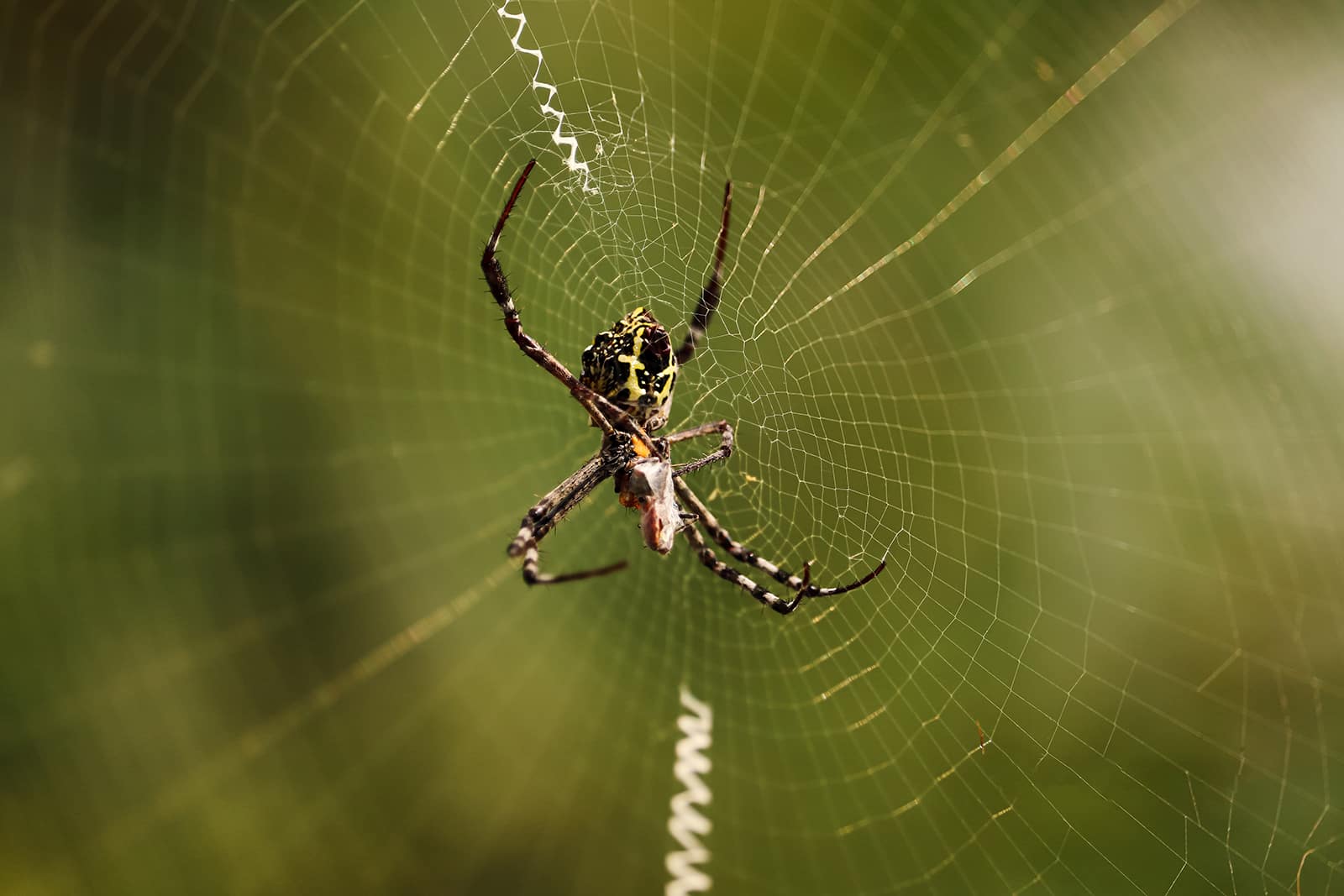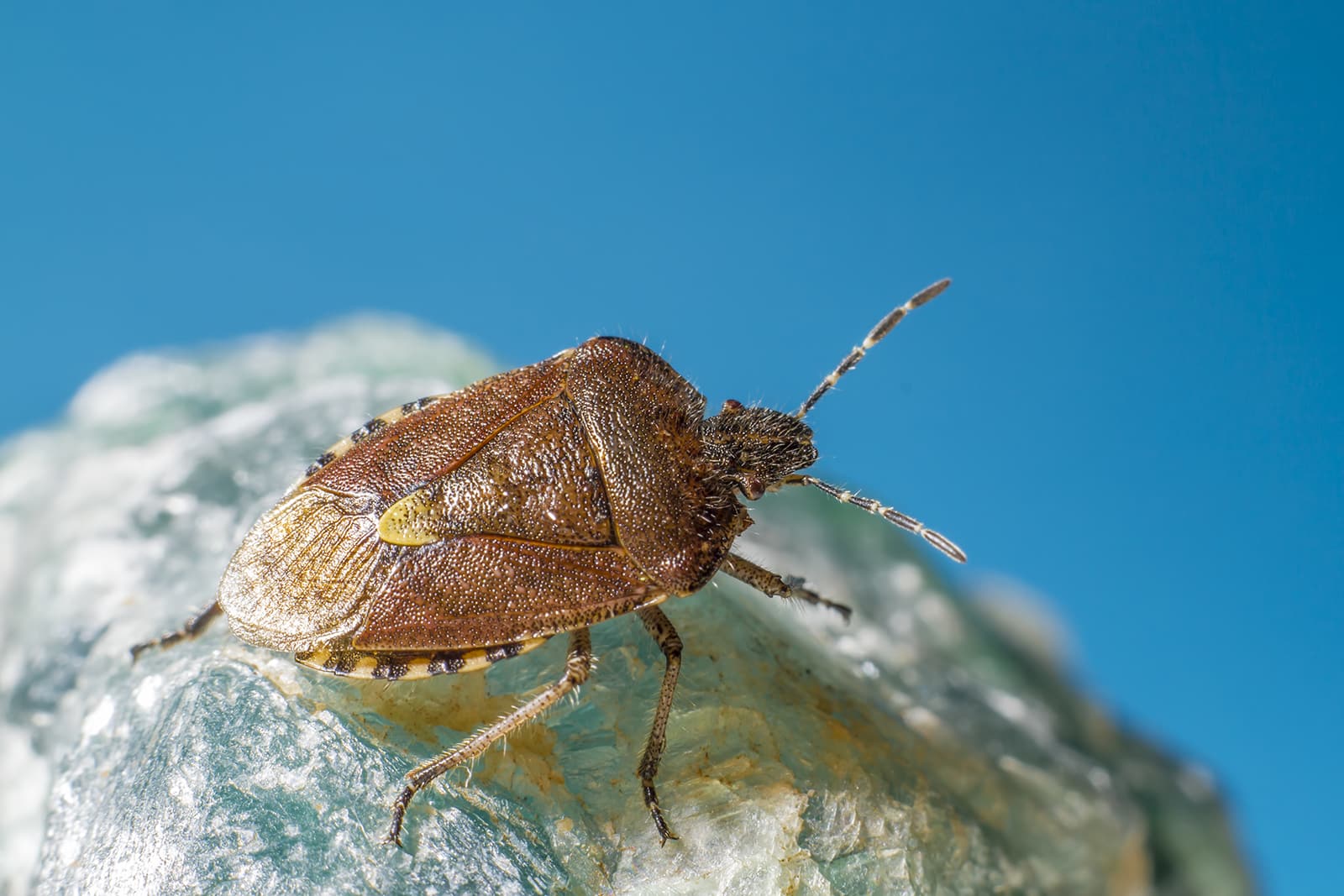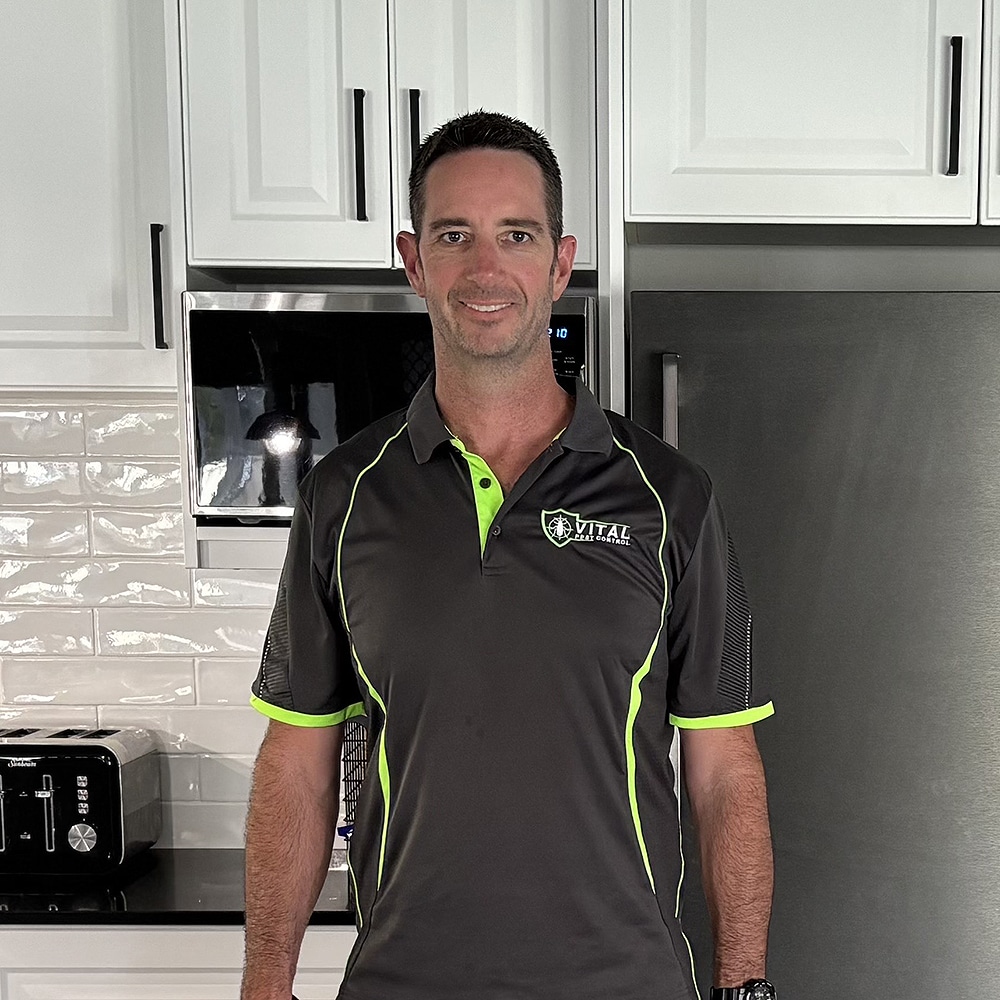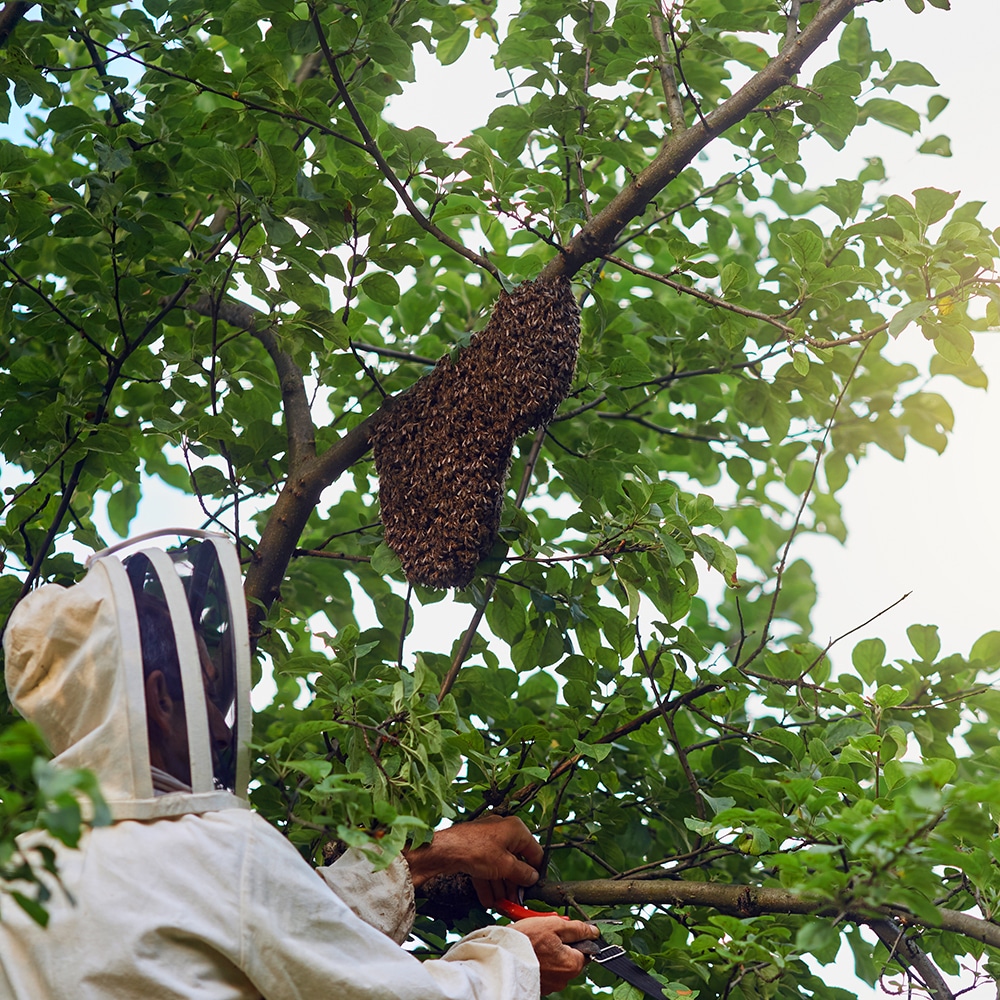
Why Do Spiders Come Back And Why
Why Do Spiders Come Back And Why On The Central Coast NSW. Responsive Proactive Solutions. Detail-focused for lasting results. Call Adam on 0431 222 894
Dealing with fleas can be frustrating. If you’re wondering how to get rid of fleas in your home, you’re not alone. Many on the Central Coast NSW face this challenge. Vital Pest Control offers practical advice to tackle flea infestations effectively.
Signs of a Flea Infestation in Your Home
Fleas often cause excessive scratching in pets. You might notice red spots on your skin too. Flea dirt, which looks like tiny black specks, can be seen on pet bedding. Keep an eye out for these signs.
Why Fleas Are Difficult to Eliminate
Fleas reproduce quickly and jump long distances. Their eggs are resistant to many treatments. This combination makes them hard to eliminate completely. Consistent efforts are essential.
How Fleas Enter Your House
Pets are the main carriers of fleas into homes. These pests latch onto fur during outdoor walks. They can also enter through clothing or second-hand furniture. Watch out for these entry points.
Where Do Fleas Hide Indoors
Fleas often hide in carpets, pet beds, and furniture. They prefer dark, warm places. Regularly check these areas to prevent infestations from growing. Be thorough in your inspections.
Best DIY Flea Treatment Methods
1. Vacuum carpets and furniture regularly.
2. Wash pet bedding in hot water.
3. Use flea combs on pets to remove fleas manually.
These methods are simple yet effective for initial control.
How to Use Flea Sprays Effectively
Spray directly onto carpets and pet areas. Follow label instructions closely. Ensure pets and children are away during application. Repeat treatments as needed for best results.
Are Flea Bombs Safe and Effective
Flea bombs can be effective but carry risks. Always evacuate the home during use. Follow all safety guidelines to prevent harm. Evaluate if this method suits your household.
Best Natural Flea Remedies for Home Use
Try diatomaceous earth on carpets and pet areas. Use vinegar in pet baths to repel fleas naturally. These remedies offer non-toxic alternatives for those concerned about chemicals.
Discover how we can help you today! Contact Vital Pest Control for more support and solutions tailored to the Central Coast NSW.

Fleas can quickly become an annoying problem in your home, especially in the humid climate of the Central Coast NSW. Recognising the signs of a flea infestation early can help you take swift action to protect your family and pets. By understanding these signs, you can better manage the situation and maintain a comfortable living environment.
Unusual Pet Behaviour
If your pets seem restless, biting or scratching more than usual, it might be a sign of fleas. Fleas cause discomfort and irritation to animals, leading to excessive grooming. Observe your pets for any unusual behaviour, as this could indicate a flea issue.
Flea Dirt Around the Home
Flea dirt, which looks like tiny black specks, can be found in pet bedding or on your floors. This dirt is flea faeces, often left behind after feeding on your pet. You can test for flea dirt by placing it on wet tissue. If it turns reddish-brown, you likely have a flea problem.
Bites in Humans
Flea bites on humans usually appear as small, red, itchy bumps, often in clusters. These bites typically occur on the feet, ankles, or legs. If you notice these bites on your skin, it could be a sign of fleas in your home.
Visible Fleas
Spotting fleas on your pets or in your home is a clear indication of infestation. Fleas are tiny, dark brown insects that move quickly and can jump significant distances. Regularly inspect your pet’s fur and common areas for any visible fleas.
Fleas present a persistent challenge for homeowners on the Central Coast of NSW. These tiny pests are not only a nuisance but can also carry diseases and cause allergic reactions in pets and humans. Understanding why fleas are difficult to eliminate is crucial in effectively managing and preventing infestations.
Resilient Lifecycle
The flea lifecycle complicates eradication efforts. These pests have four stages: egg, larva, pupa, and adult. The most challenging stage is the pupa, as it can remain dormant for months, waiting for the right conditions to hatch. This resilience means that even after treating your home, fleas can re-emerge, seemingly out of nowhere.
Rapid Reproduction
Fleas reproduce at an alarming rate. A single female flea can lay up to 50 eggs per day. This rapid reproduction ensures that infestations can quickly escalate if not addressed promptly. The sheer number of fleas makes controlling their population a daunting task.
Adaptability to Environments
Fleas adapt well to various environments. They thrive in warm, humid conditions, which are common on the Central Coast. Their ability to survive both indoors and outdoors adds to the difficulty of completely eliminating them, as they can find refuge in carpets, pet bedding, and even cracks in floors.
Addressing these challenges requires a comprehensive approach, combining professional pest control services with regular cleaning and preventative measures. By understanding the complexities of flea behaviour, homeowners can better manage infestations and protect their living spaces.
Fleas are tiny pests that can quickly become a nuisance in your home. Understanding how these pests enter your house is crucial for effective pest control. On the Central Coast NSW, many homeowners face challenges with fleas, especially during warmer months. Recognising their entry points can help you safeguard your home.
Pets as Carriers
Your furry friends are often the main culprits when it comes to bringing fleas indoors. Dogs and cats frequently roam outdoors, where fleas jump onto their fur. Once inside, these pests easily spread throughout your home. Regularly checking and treating pets can significantly reduce the risk of fleas entering your living space.
Open Doors and Windows
Fleas can enter your home through open doors and windows. These agile insects are capable of jumping long distances, making it easy for them to slip inside. Installing screens and keeping doors closed can help minimise this entry method. Additionally, sealing gaps around windows can prevent fleas from sneaking in.
Visitors and Their Belongings
Friends and family may unknowingly bring fleas into your home. These pests can hitch a ride on clothing, shoes, or bags. Encourage visitors to keep belongings off the floor and check for fleas if they’ve been in infested areas. Simple precautions can keep your home flea-free.
When dealing with a flea infestation, it’s essential to know where these pesky insects might be hiding inside your home. Understanding their favourite spots can help in effectively targeting and eliminating them. Fleas thrive in warm, humid environments, making several indoor locations ideal for their habitation.
Carpet and Rugs
Fleas often find refuge in the fibres of carpets and rugs. These areas provide a perfect breeding ground as fleas can easily hide and lay eggs without being disturbed. Regular vacuuming and steam cleaning can help disrupt their lifecycle and reduce their numbers.
Pet Bedding
Your pet’s bedding is a prime location for fleas. As pets lie down, fleas jump off and settle into the soft fabric. Washing pet bedding in hot water frequently can significantly reduce flea presence. Ensure the area around the bedding is also cleaned thoroughly.
Upholstered Furniture
Fleas can also be found in upholstered furniture. The hidden crevices and soft material make it a comfortable hiding spot. Regular vacuuming and using flea sprays designed for furniture can help manage these pests effectively.
Cracks and Crevices
Fleas can squeeze into tiny cracks and crevices in floors and baseboards. These overlooked spots often harbour adult fleas and larvae. Sealing gaps and keeping these areas clean and treated with appropriate pest control products can prevent fleas from thriving.
Fleas can be a real nuisance, especially in the Central Coast NSW. These pesky pests often find their way into homes, causing discomfort for both pets and humans. Fortunately, several DIY flea treatment methods can help manage this issue effectively. By employing these strategies, you can maintain a flea-free environment without resorting to expensive services.
Vacuum Regularly
Regular vacuuming is crucial in the fight against fleas. Focus on areas where your pets spend most of their time, such as carpets, rugs, and furniture. Vacuuming not only removes adult fleas but also eggs and larvae, breaking the flea life cycle. Dispose of the vacuum bag immediately to prevent any fleas from escaping back into your home.
Use Diatomaceous Earth
Diatomaceous earth is a natural powder that can be an effective flea treatment. Sprinkle it lightly across carpets, pet beds, and other areas where fleas are likely to hide. The powder dehydrates fleas, eventually killing them. Leave it for a few hours before vacuuming thoroughly. Ensure your pets do not inhale the powder during application.
Wash Bedding and Fabrics
Washing your pet’s bedding and any fabric items in hot water can significantly reduce flea populations. The heat kills fleas and their eggs, preventing infestations. Make this a regular part of your cleaning routine to keep fleas at bay. Using a pet-safe detergent can enhance results.
Fleas can be a persistent nuisance in homes, particularly on the Central Coast of NSW, where the climate is ideal for their breeding. Using flea sprays effectively is vital for pest control and ensures your home remains free of these pesky invaders. Understanding the right techniques can maximise the impact of flea sprays, making your pest control efforts more successful.
Choosing the Right Flea Spray
Selecting the correct flea spray is crucial. Consider sprays that target both adult fleas and their larvae, ensuring a comprehensive approach. Look for products with insect growth regulators to prevent the life cycle from continuing. Always check the label for safety guidelines, especially if you have pets or children.
Preparing Your Home
Preparation is key. Before spraying, thoroughly vacuum carpets, upholstery, and pet bedding to remove as many fleas and eggs as possible. Wash any fabrics that may harbour fleas in hot water. Clear clutter to allow easy access to affected areas, ensuring the spray reaches all corners.
Applying the Flea Spray
Follow the instructions on the flea spray carefully. Apply evenly across all surfaces, focusing on areas where your pets spend the most time. Pay attention to baseboards, under furniture, and any cracks or crevices. Ensure proper ventilation during and after application to avoid inhaling fumes.
Monitoring and Reapplying
After application, monitor the situation closely. Fleas can be stubborn, so a second application might be necessary. Continue vacuuming regularly to manage any new fleas hatching from eggs. Consistent monitoring ensures a flea-free environment over time.
Fleas can be an irritating nuisance in homes, especially on the Central Coast NSW. Many homeowners consider flea bombs, also known as foggers, as a potential solution. However, their safety and effectiveness often come into question when tackling a flea infestation.
Understanding Flea Bombs
Flea bombs release insecticide into the air, aiming to eliminate fleas by settling on surfaces. While they can significantly reduce flea populations, their reach is limited. Flea bombs struggle to penetrate deep into carpets, upholstery, or crevices where fleas and their larvae often hide. This limitation means they might not completely eradicate a flea problem, making them only partially effective.
Safety Concerns
Using flea bombs requires caution. The chemicals released can be harmful to humans and pets if inhaled or absorbed through the skin. It’s crucial to follow instructions carefully, ensuring all people and animals are out of the home during treatment and for a specified period afterward. Additionally, sensitive individuals may experience respiratory issues, making it vital to consider alternative pest control methods.
Alternative Solutions
A comprehensive approach, including vacuuming, washing bedding, and using residual sprays, can enhance results. Professional pest control services on the Central Coast NSW often provide more effective and safer solutions. Experts can assess the situation, offering tailored treatments that target fleas at all life stages, ensuring a thorough and safe eradication process.
Fleas can be a pesky problem for homeowners on the Central Coast of NSW. While chemical treatments are available, many prefer natural flea remedies. These eco-friendly options are not only effective but also safer for families and pets. Discover the best natural solutions to tackle fleas in your home.
Essential Oils
Essential oils like lavender and eucalyptus are potent flea deterrents. Mix a few drops with water and spray it around your home. Focus on areas where pets frequent. The strong scents repel fleas naturally without harming your environment. Ensure pets are not allergic to the oils before use.
Vinegar Solution
White vinegar is a powerful flea repellent. Create a mixture of equal parts vinegar and water. Spray carpets, furniture, and pet bedding with this solution. The acidic environment discourages fleas from settling, making it an ideal natural remedy.
Baking Soda
Baking soda is a handy tool in the fight against fleas. Sprinkle it on carpets and upholstery, then work it into the fibres with a brush. Leave it overnight and vacuum thoroughly. This method dehydrates fleas and their eggs, effectively reducing their numbers.
Fleas in carpets and rugs can quickly become a nuisance if not addressed promptly. These pests not only irritate pets but also pose health risks to humans. Vital Pest Control on the Central Coast NSW offers effective solutions to tackle this issue. Here’s how to get rid of fleas in your carpets and rugs.
Start with Thorough Vacuuming
Begin by vacuuming your carpets and rugs meticulously. This action removes flea eggs, larvae, and adults from the fibres. Focus on high-traffic areas and beneath furniture. Dispose of the vacuum bag or canister contents outside immediately to prevent re-infestation.
Use Flea Sprays or Powders
Apply a flea spray or powder specifically designed for carpets. Ensure the product is safe for your specific carpet material. Read the instructions carefully and cover the entire surface. These treatments often contain insect growth regulators that stop the flea life cycle.
Incorporate Steam Cleaning
Steam cleaning your carpets and rugs can be highly effective. The heat kills fleas at all life stages. Renting a steam cleaner or hiring a professional service can ensure thorough cleaning. Regular steam cleaning also helps maintain a fresh environment.
Consult Professional Pest Control
Persistent flea problems might require professional intervention. Vital Pest Control offers tailored treatments on the Central Coast NSW. They use advanced methods to ensure your home is flea-free. Trusting experts can save time and provide peace of mind.
Fleas can quickly turn your home into a nightmare, especially when they invade your furniture and bedding. Vital Pest Control on the Central Coast NSW is here to help you tackle this issue effectively. Ensuring a flea-free environment is essential for both comfort and health. Let’s dive into some practical methods to eliminate fleas from your furniture and bedding.
Vacuum Thoroughly
Start by vacuuming all furniture and bedding meticulously. Pay special attention to crevices and seams where fleas often hide. Use a vacuum with strong suction to capture adult fleas and their larvae. After vacuuming, dispose of the vacuum bag or empty the canister far away from your home to prevent re-infestation.
Wash Bedding in Hot Water
Remove all bedding and wash it in hot water. The heat will kill fleas and their eggs. Dry the bedding on a high heat setting for additional flea elimination. Regular washing is crucial in breaking the flea life cycle and preventing future infestations.
Use Flea Sprays and Powders
Apply flea sprays or powders specifically designed for furniture. Choose products safe for indoor use and follow the instructions carefully. These treatments work to kill remaining fleas and larvae. Always ventilate the area during application to ensure safety for you and your pets.
Fleas can be a persistent problem, especially for those living on the Central Coast NSW. Stopping these pests from biting humans involves a combination of prevention and treatment strategies. While eradicating fleas from your home is crucial, protecting yourself from bites is equally important. Here’s how you can do it effectively.
Regular Vacuuming and Cleaning
Frequent vacuuming helps remove adult fleas, larvae, and eggs from carpets and upholstery. Ensure you dispose of the vacuum bag immediately to prevent fleas from escaping back into your home. Regular cleaning disrupts the flea life cycle, reducing their population. Pay special attention to areas where pets spend most of their time.
Wear Protective Clothing
When fleas are active, wearing long sleeves and trousers can minimise skin exposure. Choosing light-coloured clothing can also help you spot fleas more easily. This simple yet effective measure significantly reduces the chances of flea bites when you’re indoors.
Use Flea Repellents
Applying flea repellents on your skin can offer temporary protection. Natural options like essential oils, such as eucalyptus or lavender, can deter fleas. Always patch-test any product to ensure it doesn’t irritate your skin. Consistent use of repellents adds another layer of defence against these pests.
Implementing these strategies can greatly reduce flea bites, making life more comfortable while you work on fully eradicating fleas from your environment.
Flea infestations are a persistent problem for many homes on the Central Coast NSW. Despite best efforts, these tiny pests seem to return time and again. Understanding why flea infestations keep coming back can help in developing effective strategies to eliminate them for good.
Environmental Factors
The warm and humid climate on the Central Coast provides an ideal environment for fleas to thrive. Fleas flourish in these conditions, making it challenging to eliminate them entirely. Regular treatments are necessary to disrupt their lifecycle and prevent them from bouncing back.
Incomplete Treatment
Many homeowners fail to treat all the necessary areas when tackling flea infestations. Pets, carpets, and outdoor spaces require attention. Overlooking any of these can leave behind flea eggs or larvae, allowing the infestation to resurge. A comprehensive treatment approach is essential.
Pet Reinfestation
Pets often bring fleas back into the home, especially if they frequent untreated areas. Regular flea treatments for pets and maintaining clean spaces can prevent reinfestation. Ensuring your pets are protected is crucial in keeping fleas at bay.
Ineffective Products
Using low-quality or incorrect products can lead to ineffective flea control. Investing in quality treatments and consulting with professionals like Vital Pest Control ensures the use of effective solutions tailored to your specific needs.
Vacuuming is a crucial step in tackling flea infestations in your home. If you’re dealing with a flea problem on the Central Coast of NSW, understanding how to vacuum effectively can make all the difference. Proper vacuuming not only removes adult fleas but also targets larvae and eggs, breaking the flea life cycle. This guide will help you vacuum your home efficiently to combat these pesky parasites.
Choosing the Right Vacuum
It’s important to select a vacuum with strong suction and a rotating brush. These features help lift fleas and their eggs from carpets, rugs, and upholstery. A vacuum with a bag is preferable, as it allows for easy disposal of fleas and debris. Ensure the bag or canister is emptied immediately after use to prevent fleas from escaping back into your home.
Focus in High-Traffic Areas
Fleas love to hide in areas where pets frequently rest or travel. Pay special attention to carpets, pet bedding, and furniture. Move furniture and vacuum underneath to reach hidden spots where fleas may thrive. Don’t forget areas near baseboards and corners where flea eggs and larvae often settle.
Adopt a Regular Vacuuming Routine
Consistency is key in eradicating fleas. Vacuum daily during an infestation to disrupt the flea life cycle. Even after the infestation is under control, maintaining a regular vacuuming schedule will help prevent future outbreaks. This routine approach keeps your home fresh and flea-free, creating a healthier environment for you and your pets.
Choosing the right commercial flea control products is crucial for effective pest management on the Central Coast NSW. Fleas can be stubborn, so using the best products ensures your efforts are not in vain. Here, we explore top options that professionals use to keep fleas at bay.
Professional-Grade Sprays
Professional-grade sprays are essential in tackling flea infestations. These sprays penetrate deep into carpets and upholstery, where fleas often hide. They not only kill adult fleas but also disrupt the life cycle by targeting eggs and larvae. When selecting a spray, ensure it offers long-lasting protection and is safe for use around pets and humans.
Insect Growth Regulators
Insect growth regulators (IGRs) are a vital tool in flea control. They prevent fleas from developing into adults, effectively reducing the population over time. IGRs work well alongside other treatments, providing a comprehensive solution. Many products combine IGRs with insecticides, offering a dual-action approach for enhanced efficacy.
Dusts and Powders
Dusts and powders are another effective option for flea control. Applied to carpets and crevices, they dehydrate fleas and larvae, breaking the infestation cycle. These products are ideal for hard-to-reach areas and can be used as part of a broader pest management plan. Choose dusts that are specifically formulated for fleas to maximise results.
Fleas can be a nuisance, especially if you’re battling them in your home. Understanding when to call a professional for flea removal is crucial to maintaining a healthy living environment. On the Central Coast NSW, Vital Pest Control offers expert services to handle these pesky invaders.
Persistent Infestations
If you’ve tried DIY methods and still notice fleas, it might be time to call in the professionals. Persistent infestations often require expert solutions that target all life stages of the flea, ensuring they don’t return. Professionals have access to potent treatments not available to the public, making their services more effective.
Health Concerns
Fleas are more than just an annoyance; they can pose health risks to humans and pets. If you notice increased itching, allergic reactions, or signs of flea-borne diseases, seek professional help. Experts can quickly assess and address the problem, safeguarding your family’s wellbeing.
Lack of Time and Resources
Successfully tackling a flea infestation requires time and resources. If you’re short on either, hiring a pest control service can be a practical solution. Professionals can efficiently manage the situation, allowing you to focus on other priorities without the stress of dealing with fleas.
Please leave your details in the form and we will call you back the same day.
So that we can process your enquire efficiently please leave as many details as possible and upload any relevant images. (.jpg and .png format)

Why Do Spiders Come Back And Why On The Central Coast NSW. Responsive Proactive Solutions. Detail-focused for lasting results. Call Adam on 0431 222 894

Building a Long Term Residential Pest Protection Plan For Home Owners On The Central Coast NSW. Responsive Proactive Solutions. Detail-focused for lasting results. Call Adam on 0431 222 894

How to Protect Your Home from Wasp Infestations On The Central Coast NSW. Responsive Proactive Solutions. Detail-focused for lasting results. Call Adam on 0431 222 894